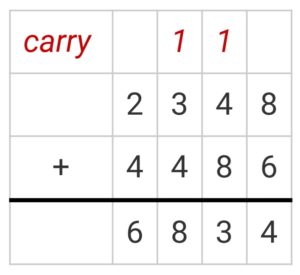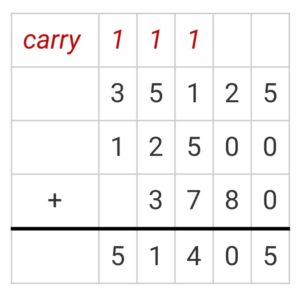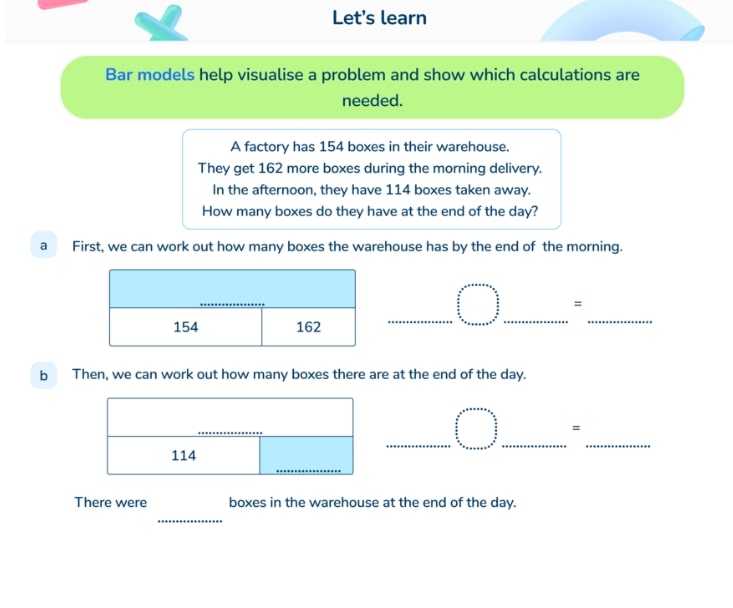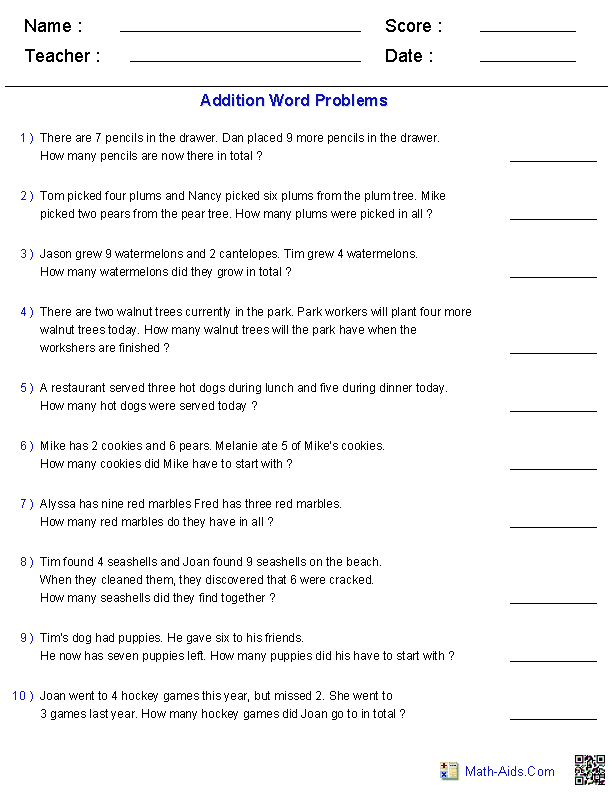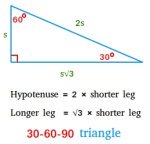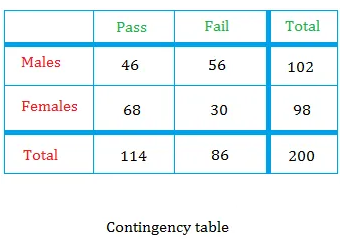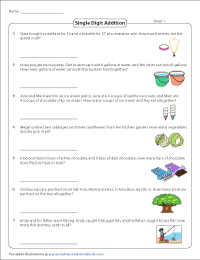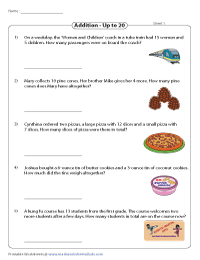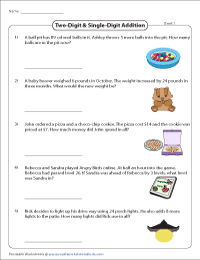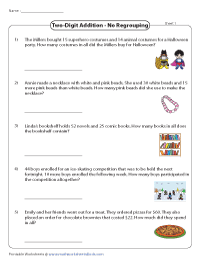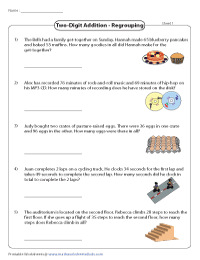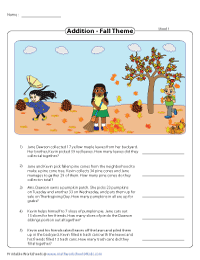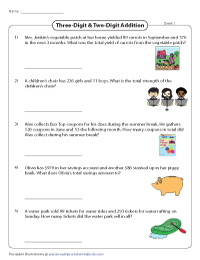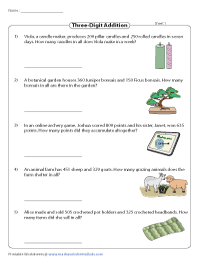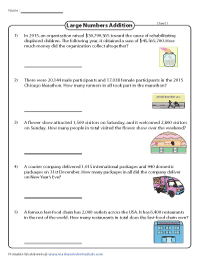Word problems for grade 2 addition
Just like reading an exciting story, addition word problems for grade 2 with answers are very interesting stories for your kids to read and understand what is going on in the story. As our word problems for grade 2 addition are easy to understand, we desire to enhance your kid’s confidence in quick solving all addition word problems at all times in and out of the math class.
It is equally interesting to note here that we have provided a consistent approach wherein your kids will master how to set up an addition equation that befits any given story. As a result, we’ll begin by teaching your kids how to write an addition sentence word problem, and then we continue with simple approaches for adding problems with one-digit numbers, two digits, and up to three-digit numbers.
How to correctly solve all addition word problems the simplest ways
Engage in this fantastic resource and guide your kids how to correctly solve all addition word problems the simplest ways. When faced with an addition word problem, you have to;
First of all, read the problem carefully at least twice in order to understand what is being asked.
Secondly, write down the addition sentence, consisting of all the numbers in the word problem that needs to be added.
Finally, you can now solve or add up the numbers to get your answer.
Word Problems on Addition helps your child to understand the concept of addition deeply. Learn how to read and analyze the statement problems and add the numbers from here. Try to solve the problems given on this page and check whether your solutions are correct or not. You can use Addition with Regrouping or Addition without Regrouping to solve word problems. Hence check out the Addition Problems with the solutions given below and practice as many times as you wish.
Also, Refer:
- Addition
- Addition Worksheets
Simple Word Problems on Addition with Solutions
Example 1.
There are 152 frogs in one pond and 136 frogs in another pond. How many frogs are there in all?
Solution:
Given,
There are 152 frogs in one pond and 136 frogs in another pond.
Now add both numbers to find the total number of frogs are there in the ponds.
152 + 136 = 288
1 5 2
+1 3 6
2 8 8
Thus there are 288 frogs in all.
Example 2.
In a class, there are 45 girls and 35 boys. What is the total strength of boys and girls in the class?
Solution:
Given,
There are 45 girls and 35 boys.
Add 45 and 35 to find the total number of students in a class.
4 5
+3 5
8 0
Thus the total strength of boys and girls in the class is 80.
Example 3.
In a basketball game, 2340 adult tickets and 1258 children tickets are sold. How many tickets are sold altogether?
Solution:
Given that,
In a basketball game, 2340 adult tickets and 1258 children tickets are sold.
2 3 4 0
+1 2 5 8
3 5 9 8
Therefore 3598 tickets were sold in all.
Example 4.
Lilly has 9 beads. She bought another 8 beads. How many beads does she have in all?
Solution:
Given that,
Lilly has 9 beads.
She bought another 8 beads.
9 + 8 = 17
Thus Lilly has 17 beads in all.
Example 5.
David drove 2348 miles to Florida. After 10 days he drove 4486 miles home. How many miles did he drive in all?
Solution:
Given that,
David drove 2348 miles to Florida.
After 10 days he drove 4486 miles home.
Thus David drove 6834 miles in all.
Example 6.
There are 35,125 bags of wheat, 3,730 bags of gram, and 12500 bags of rice in a store. Find the total number of bags in the store?
Solution:
Given,
There are 35,125 bags of wheat, 3,730 bags of gram, and 12500 bags of rice in a store.
35,125 + 3730 + 12500 = 51,405
Therefore there are 51405 bags in the store.
Example 7.
Stella has 58 flower pots in her garden. She bought 12 more pots. How many pots are there in her garden?
Solution:
Given,
Stella has 58 flower pots in her garden.
She bought 12 more pots.
5 8
+1 2
7 0
Thus there are 70 pots in her garden.
Addition word problems appear throughout KS1 and KS2. Children are introduced to simple addition and subtraction word problems in the early years. This knowledge is then built upon throughout primary school, right up to Year 6, when pupils work with complex multi-step word problems involving large whole numbers and decimal numbers.
In the early stages, in Key Stage one and lower Key Stage two, addition word problems are taught through the use of concrete resources and visual images. As pupils become more confident with the formal written methods, children progress to use these to help solve more complex addition and subtraction word problems.
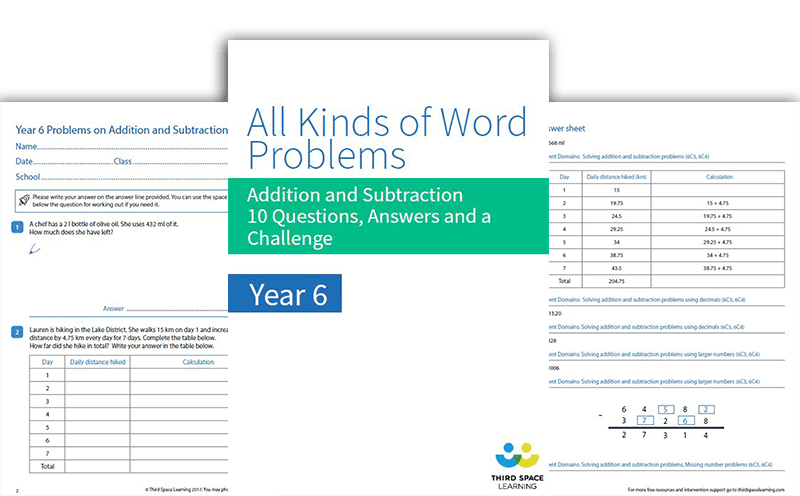
All Kinds of Word Problems Addition and Subtraction
Download this free, printable pack of addition word problems worksheets to help your class to develop their addition and problem solving skills.
Children benefit from regular exposure to word problems, alongside any fluency work they are doing. To help you with this, we have put together a collection of 25 addition word problems with answer keys, which can be used with pupils from Year 2 to Year 6.
Addition word problems in the National Curriculum
Addition word problems in Year 1
Pupils in Year 1 are introduced to simple one-step problems involving place value addition and subtraction word problems, through the use of concrete objects, pictorial representations and missing number problems. At this stage, children should be memorising and reasoning with number bonds to 10 and 20. They also need to understand the effect of adding zero.
Addition word problems in Year 2
In Year 2, pupils continue to use concrete objects and pictorial representations to solve addition problems, including those involving numbers, quantities, measures and simple money word problems. They are also expected to apply their increasing knowledge of mental and written methods, using one and two-digit numbers. Pupils start working on basic written addition and are introduced to the concept of regrouping.
Addition word problems in Year 3
By Year 3, pupils are starting to tackle more complex addition word problems. They begin to use written methods to add 3-digit numbers, using formal column method for addition. Pupils also begin solving addition problems involving fractions, in addition to building on their mental addition skills to add a three-digit number and ones, tens and hundreds.
Addition word problems in Year 4
Pupils in Year 4 progress to solving two-step problems in contexts, deciding which operations and methods to use and why. They are also beginning to work with larger numbers, adding up to four digits using the formal written method of column addition.
Addition word problems in Year 5
By Year 5, pupils are solving multi-step word problems in contexts. They add whole numbers with more than four digits and decimal numbers, using formal written methods. Children are also adding increasingly larger numbers mentally.
Third Space Learning’s online one-to-one tutoring programmes work with students to fill their learning gaps and build confidence in maths. Tailored to the needs of each student, Third Space Learning’s tutoring programmes offer students more opportunities to practice their maths skills and reach their year group standard.
covering multi-step addition and subtraction word problems
Addition word problems in Year 6
Pupils in Year 6 continue to work with larger numbers and decimals, solving increasingly complex multi-step problems, deciding which operations to use and why. By this stage students should have a solid grasp of the written methods for all four operations.
Why are word problems important for children’s understanding of addition
Word problems help children to make sense of addition. In the Early Years, simple story problems aid understanding of what is being asked, alongside the use of concrete resources and visual images. Real-life word problems are an important element of the maths curriculum for children throughout the school, giving them the opportunity to put the addition skills they have learnt into context, to understand how they can be used in the outside world.
How to teach addition word problem solving in primary school
Pupils need to be taught how to approach word problems, beginning by reading the questions carefully and making sure they fully understand what is being asked. The next step is to determine what calculation is needed and whether there are concrete resources or pictorial representations they can use to help solve it, or if
Here is an example:
There were 3,756 people on a cruise ship.
456 people get on after the first week, whilst 623 get off.
How many passengers are on board the ship now after the first week?
How to solve:
What do you already know?
- There are 3,756 on the cruise ship at the start of the journey.
- 456 people get on after the first week, therefore we need to add 456 to 3,746. This gives us a total of 4,212 people
- 623 people get off, so we need to subtract 623 from the total number of passengers now on the boat. When we subtract 623 from 4,212, we get a total of 3,589.
How can this be represented pictorially?
- We can draw 2 bar models to represent this problem.
- The number of passengers who got on the ship after the first week is added to the total number of people on the boat at the start of the trip.
- We then draw a second bar model to show how many passengers were left on the ship once the 623 passengers got off after the first week.
Addition word problems for year 2
Addition word problems in Year 2 require pupils to work with 1 and 2-digit numbers. At this stage it is important children are working with concrete resources to support their understanding. Children also begin to learn how to check their answers by finding the inverse of calculations.
Year 2 addition question 1
Maise has 14 crayons. Her friend gives her 8 more.
How many crayons does Maisie have now?
Answer: 22 crayons
14 + 8 = 22
Year 2 addition question 2
Hamza buys a large pack of biscuits, whilst his sister buys a small pack.
The large pack contains 18 biscuits, whilst the small pack contains 8.
How many biscuits does Hamza and his sister have altogether?
Answer: 26 biscuits
18 + 8 = 26
Year 2 addition question 3
13 children sign up for the after school football club and 11 sign up for the netball club.
How many children sign up altogether?
Answer: 24 children
13 + 11 = 24
Year 2 addition question 4
Amal collects 34 conkers. Her brother finds 7 more and adds them to her collection.
How many conkers does Amal have now?
Answer: 41 conkers
34 + 7 = 41
Year 2 addition question 5
38 children were on the bus going to the zoo.
The bus stopped to pick up 12 children from another school.
How many children were on the bus now?
Answer: 50 children
38 + 12 = 50
Addition word problems for year 3
Word problems for Year 3 require pupils to work with larger numbers. By this stage, children are becoming more confident with the formal written column method and are able to use this to solve 2 and 3 digit addition word problems. Addition word problems can be incorporated into other areas of the maths curriculum, for example, through time word problems.
Year 3 addition question 1
Mason has collected 256 stickers. Rory has collected 352 stickers.
How many stickers have the two boys collected between them?
Answer: 608 stickers
256 + 352 = 608
Year 3 addition question 2
A train driver drove 234 miles on Monday and a further 186 miles on Tuesday.
How many miles did he drive in total over the 2 days?
Answer: 420 miles
(Show as column method; 234 + 186 = 420)
Year 3 addition question 3
Sam spent £1.25 on a bar of chocolate in the shop. He then spent 60p on a packet of sweets. How much did he spend all together
Answer: £1.85
1.25 + 85 = 1.85
Year 3 addition question 4
A climber has climbed 238m up the mountain. He has another 174m to go to reach the top. How high is the mountain?
Answer: 412m
(Show has column method: 238 + 174 = 412)
Year 3 addition question 5
A family was travelling to their holiday home.
They set off at 9am and travelled for an hour and a half.
They then had a 20 minute break and travelled for another hour.
What time did they reach their holiday home?
Answer: 11:50am
1 ½ hours + 20 minutes + 1 hours = 2 hours 50
Or
Start at 9am, count on an hour, then another 20 minutes, followed by another hour = 11:50am
Addition word problems for year 4
With word problems for Year 4, pupils progress onto 4 digit addition word problems. They are also beginning to solve more complex, two-step word problems. Children should be encouraged to estimate and find the inverse, to check the accuracy of their calculations. In Year 4, pupils also solve addition word problems involving fractions and decimals.
Year 4 addition question 1
A builder is building a wall around the school playing field.
He has used 4865 bricks so far and has another 1135 bricks to finish the wall.
How many bricks will he use to build the wall?
Answer: 6000 bricks
4865 + 1135 = 6000
Year 4 addition question 2
Hot dogs: £1.60
Burgers: £1.40
Pizza: £1.99
Fries: £1.25
Soft drinks: £1.15
Chloe is buying some food from a cafe.
She buys 2 hot dogs, a pizza, 2 portions of fries and 2 drinks.
How much does she spend altogether?
Answer: £9.99
Hot dogs: £1.60 + £1.60 = £3.20
Pizza: £1.99
Fries: £1.25 + £1.25 = £2.50
Drinks: £1.15 + £1.15 = £2.30
Total= £3.20 + £1.99 + £2.50 + £2.30 = £9.99
Year 4 addition question 3
A runner is completing a 10,000m race.
He has already run 4560m. How much further does he have to run?
Answer: 5440m
Solved mentally by calculating how many more metres to 5000m – 440m, then adding on a further 5000m = 5440m
This can also be solved as a missing number column addition, or as a subtraction calculation.
Year 4 addition question 4
Ben has £50. He buys a t-shirt for £15.50 and a hoodie for £25.50.
How much change does he have left?
Answer: £9 change
£15.50 + £25.50 = £41
£50 – £41 = 9
Year 4 addition question 5
A flight from London to Doha is a distance of 6731 miles. It is then another 12,375km to Sydney.
How far is the journey from London to Sydney, via Doha?
Answer: 19,106 miles
12,375 + 6731 = 19,106
Addition word problems for year 5
Word problems for Year 5 require pupils to solve addition word problems with larger numbers (more than 4 digits), using formal written methods and mentally. Word problems become more complex multi-step problems, involving other operations. Pupils at this stage should continue to be encouraged to check their answers by finding the inverse.
Year 5 addition question 1
Three towns have populations of 14,768, 17,956 and 13,858.
What is the total population of the three towns combined?
Answer: 46,582
(Show as column method 14,768 + 17,956 + 13,858 = 46,582)
Year 5 addition question 2
A car can hold 60 litres of fuel when the tank is full.
If 17.98 litres of fuel has been used, how much fuel does the tank hold now?
Answer: 42.02L
This can be solved mentally, by counting on from 17.98, as a missing number addition question, using column addition, or as a subtraction question.
Year 5 addition question 3
A man weighing 85.23kg gets into a lift. On the next floor, another man gets in, weighing 79.4kg.
If the lift can hold a maximum weight of 500kg, how much more weight can the lift carry?
Answer: 335.37kg
(show as column method)
85.23 + 79.4 = 164.63
500 – 164.63 = 335.37
Or
Count up from 164.63 or solve as a missing number addition.
Year 5 addition question 4
The temperature in Toronto was -27 degrees celsius one January evening. On the same day, the temperature in Doha went up to 29 degrees.
What was the difference between the temperature in Toronto and the temperature in Doha?
Answer: 56 degrees celsius
29 + 27 = 56
Year 5 addition question 5
Large packet of biscuits – £1.75
Small packet of biscuits – 98p
Lucy buys 2 large packets of biscuits and 4 small packets. How much change will she get from a £10 note?
Answer: £2.58
2 large packets = £1.75 + £1.75 = £3.50
4 small packets = 98p x 4 = £3.92
Total = £3.92 + £3.50 = £7.42
£10 – 7.42 = £2.58 or count on from £7.42 to £10
Addition word problems for year 6
With word problems for Year 6, pupils need to be able to solve word problems using larger whole numbers of up to 6 or 7 digits, problems involving fraction word problems and problems involving decimals. Addition word problems in SATs include one-step, two-step and more complex multi-step problems.
Year 6 addition question 1
Mr Jones spent £24,799 on a new car and £8,750 on a caravan.
He has £15,074 left in his bank account.
How much did he have to start with?
Answer: £48,623
24,799 + 8,750 = 33,549
33,549 + 15,074 = 48,623
Year 6 addition question 2
17,523 more people visited a theme park this year than last year.
If 315,736 people visited last year. How many visited this year?
Answer: 333,259 people
315,736 + 17,523 = 333,259
Year 6 addition question 3
A zoo buys 53.7kg of animal feed. Each day, 7.34kg is used for the camels, 2356g for the meerkats and 4.49kg for the zebras.
After 2 days, how much will the zoo have left?
Answer: 25.328kg left
7.34 + 2.356 + 4.49 = 14,186
14,186 + 14,186 = 28.372
53.7 – 28.372 = 25.328
Year 6 addition question 4
A company sent out 1,417,806 flyers in April and 931,368 in May.
- Estimate how many flyers the company sent out in April and May combined.
- What is the actual number of flyers sent out?
Answer
- 2,300,000
1,400,000 + 900,000 = 2,300,00
- 1,417,806 + 931,368 = 2,349,174
Year 6 addition question 5
The Brown family are going on a road trip. They plan to drive 274.3 miles to a hotel. They then have another 276.9 miles to drive to reach their final destination.
If they have travelled 197.8 miles so far, how much further do they have to travel before they reach their final destination?
Answer: 353.4 miles
274.3 + 276.9 = 551.2
551.2 – 197.8 = 353.4
Looking for more word problems resources?
Take a look at our comprehensive collection of word problems practice questions covering a wide range of topics such as ratio word problems, percentages word problems, multiplication word problems, division word problems and more.
Do you have pupils who need extra support in maths?
Every week Third Space Learning’s maths specialist tutors support thousands of pupils across hundreds of schools with weekly online 1-to-1 lessons and maths interventions designed to plug gaps and boost progress.
Since 2013 we’ve helped over 145,000 primary and secondary school pupils become more confident, able mathematicians. Learn more or request a personalised quote for your school to speak to us about your school’s needs and how we can help.
Dynamically Created Word Problems
Here is a graphic preview for all of the word problems worksheets. You can select different variables to customize these word problems worksheets for your needs. The word problems worksheets are randomly created and will never repeat so you have an endless supply of quality word problems worksheets to use in the classroom or at home. Our word problems worksheets are free to download, easy to use, and very flexible.
These word problems worksheets are a great resource for children in 3rd Grade, 4th Grade, and 5th Grade.
Click here for a Detailed Description of all the Word Problems Worksheets.
Quick Link for All Word Problems Worksheets
Click the image to be taken to that Word Problems Worksheet.
Words to Symbols
|
Addition Word Problems
|
Addition Word Problems
|
Addition Word Problems
|
Addition Word Problems
|
Addition Word Problems
|
Subtraction Word Problems
|
Subtraction Word Problems
|
Addition and Subtraction
|
Addition and Subtraction
|
Addition and Subtraction
|
Addition and Subtraction
|
Multi-Step Problems
|
Multiplication Word Problems
|
Multiplication Word Problems
|
Multiplication Word Problems
|
Division Word Problems
|
Division Word Problems
|
Division Word Problems
|
Division Word Problems
|
Multiplication and Division
|
Mixed Operations Problems
|
One Step Equation
|
Two Step Equation
|
Multi-Step All Operations
|
Fractions Word Problems
|
Fractions Word Problems
|
Fractions Word Problems
|
Fractions Word Problems
|
Fractions Word Problems
|
U. S. Coins Word Problems
|
Advanced Adding U. S. Coins
|
U. S. Money Word Problems
|
U. S. Money Word Problems
|
U. S. Money Word Problems
|
Travel Time
|
Reading a Calendar
|
Elapsed Dates
|
Ratios and Rate
|
Percentage
|
Mixed Operations
|
U.S. Money
|
Detailed Description for All Word Problems Worksheets
Words to Symbols Handout
This Word Problems Worksheet will produce a great handout to help students learn the symbols for different words and phrases in word problems.
Addition Word Problems Worksheets Using 1 Digit with 2 Addends
These addition word problems worksheets will produce 1 digit problems with two addends, with ten problems per worksheet. These word problems worksheets are appropriate for 3rd Grade, 4th Grade, and 5th Grade.
Addition Word Problems Worksheets Using 2 Digits with 2 Addends
These addition word problems worksheets will produce 2 digits problems with two addends, with ten problems per worksheet. These word problems worksheets are appropriate for 3rd Grade, 4th Grade, and 5th Grade.
Addition Word Problems Worksheets Using 1 Digit with 3 Addends
These addition word problems worksheets will produce 1 digit problems with three addends, with ten problems per worksheet. These word problems worksheets are appropriate for 3rd Grade, 4th Grade, and 5th Grade.
Addition Word Problems Worksheets Using 2 Digits with 3 Addends
These addition word problems worksheets will produce 2 digits problems with three addends, with ten problems per worksheet. These word problems worksheets are appropriate for 3rd Grade, 4th Grade, and 5th Grade.
Addition Word Problems Worksheets 2 Digits Missing Addends
These addition word problems worksheet will produce 2 digits problems with missing addends, with ten problems per worksheet. You may select between regrouping and non-regrouping type of problems. These word problems worksheets are appropriate for 3rd Grade, 4th Grade, and 5th Grade.
Subtraction Word Problems Worksheets Using 1 Digit
These subtraction word problems worksheets will produce 1 digit problems, with ten problems per worksheet. These word problems worksheets are appropriate for 3rd Grade, 4th Grade, and 5th Grade.
Subtraction Word Problems Worksheets Using 2 Digits
These subtraction word problems worksheets will produce 2 digits problems, with ten problems per worksheet. These word problems worksheets are appropriate for 3rd Grade, 4th Grade, and 5th Grade.
Addition and Subtraction Word Problems Worksheets Using 1 Digit
These addition and subtraction word problems worksheets will produce 1 digit problems, with ten problems per worksheet. These word problems worksheets are appropriate for 3rd Grade, 4th Grade, and 5th Grade.
Addition and Subtraction Word Problems Worksheets Using 2 Digits
These addition and subtraction word problems worksheets will produce 2 digits problems, with ten problems per worksheet. These word problems worksheets are appropriate for 3rd Grade, 4th Grade, and 5th Grade.
Addition and Subtraction Word Problems Worksheets 2 Digits With No Regrouping
These addition and subtraction word problems worksheets will produce 2 digits problems with no regrouping and ten problems per worksheet. These word problems worksheets are appropriate for 3rd Grade, 4th Grade, and 5th Grade.
Addition and Subtraction Word Problems Worksheets Using 3 Digits
These addition and subtraction word problems worksheets will produce 3 digits problems, with ten problems per worksheet. These word problems worksheets are appropriate for 3rd Grade, 4th Grade, and 5th Grade.
Multi-Step Problems Addition and Subtraction
These multi-step addition and subtraction word problems worksheets will produce 10 problems per worksheet. These word problems worksheets are appropriate for 3rd Grade, 4th Grade, and 5th Grade.
Multiplication Word Problems Worksheets Using 1 Digit
These multiplication word problems worksheets will produce 1 digit problems, with ten problems per worksheet. These word problems worksheets are appropriate for 3rd Grade, 4th Grade, and 5th Grade.
Multiplication Word Problems Worksheets Using Dozens
These multiplication word problems worksheets will produce problems using dozens, with ten problems per worksheet. These word problems worksheets are appropriate for 3rd Grade, 4th Grade, and 5th Grade.
Multiplication Word Problems Worksheets Using 2 Digits
These multiplication word problems worksheets will produce 2 digits problems, with ten problems per worksheet. These word problems worksheets are appropriate for 3rd Grade, 4th Grade, and 5th Grade.
Division Word Problems Worksheets Using 1 Digit in Divisor
These division word problems worksheets will produce 1 digit divisor problems, with ten problems per worksheet. These word problems worksheets are appropriate for 3rd Grade, 4th Grade, and 5th Grade.
Division Word Problems Worksheets Using Dozens in Divisor
These division word problems worksheets will produce problems using dozens in the divisor, with ten problems per worksheet. These word problems worksheets are appropriate for 3rd Grade, 4th Grade, and 5th Grade.
Division Word Problems Worksheets Using Multiple Digits in Divisor
These division word problems worksheets will produce multiple digits in the divisor for the problems, with ten problems per worksheet. These word problems worksheets are appropriate for 3rd Grade, 4th Grade, and 5th Grade.
Dividing with Fractions Worksheets
These division Word Problems Worksheets will produce problems that focus on division with fractions. You have the option to select the range of denominators, as well as the types of fractions displayed. These word problems worksheets are appropriate for 4th Grade, 5th Grade, and 6th Grade.
Multiplication and Division Problems Using 1 Digit
These multiplication and division word problems worksheets will produce 1 digit problems, with ten problems per worksheet. These word problems worksheets are appropriate for 3rd Grade, 4th Grade, and 5th Grade.
Mixed Operations Word Problems Using 1 or 2 Digits
These mixed operations word problems worksheets will produce addition, multiplication, subtraction and division problems with 1 or 2 digit numbers. These word problems worksheets will produce ten problems per worksheet. These word problems worksheets are appropriate for 3rd Grade, 4th Grade, and 5th Grade.
One Step Equation Word Problems
These equations worksheets will produce one step word problems. These worksheets will produce ten problems per worksheet. These word problems worksheets are a good resource for students in the 5th Grade through the 8th Grade.
Two Step Equation Word Problems
These equations worksheets will produce two step word problems. These worksheets will produce ten problems per worksheet. These word problems worksheets are a good resource for students in the 5th Grade through the 8th Grade.
Multi-Step All Operations Word Problems
These Word Problems worksheets will produce word problems involving all basic operations. You may choose the format of the answers. These word problems worksheets will produce ten problems per worksheet. These word problems worksheets are a good resource for students in the 5th Grade through the 8th Grade.
Adding Two Fractions Word Problems
These fractions word problems worksheets will produce problems with the addition of two fractions. These word problems worksheets will produce ten problems per worksheet. These word problems worksheets are a good resource for students in the 5th Grade through the 8th Grade.
Adding Three Fractions Word Problems
These fractions word problems worksheets will produce problems with the addition of three fractions. These word problems worksheets will produce ten problems per worksheet. These word problems worksheets are a good resource for students in the 5th Grade through the 8th Grade.
Subtracting Fractions Word Problems
These fractions word problems worksheets will produce problems involving subtracting two fractions. These word problems worksheets will produce ten problems per worksheet. These word problems worksheets are a good resource for students in the 5th Grade through the 8th Grade.
Adding Two Mixed Numbers Word Problems
These fractions word problems worksheets will produce problems involving adding two mixed numbers. These word problems worksheets will produce ten problems per worksheet. These word problems worksheets are a good resource for students in the 5th Grade through the 8th Grade.
Subtracting Two Mixed Numbers Word Problems
These fractions word problems worksheets will produce problems involving subtracting two mixed numbers. These word problems worksheets will produce ten problems per worksheet. These word problems worksheets are a good resource for students in the 5th Grade through the 8th Grade.
Adding U.S. Coins Word Problems
This U.S. coins word problems worksheet will produce coin addition problems. These worksheets will produce ten problems per worksheet. These word problems worksheets are a good resource for students in the 5th Grade through the 8th Grade.
Advanced Adding U.S. Coins Word Problems
These Word Problems Worksheets will produce word problems that focus on adding up different denominations of US coin currency. You have the option to select any combination of pennies, nickels, dimes, quarters, and half dollars for each worksheet. These worksheets will produce ten problems per worksheet. These word problems worksheets are a good resource for students in the 5th Grade through the 8th Grade.
U.S. Money Adding Two Items Word Problems
These U.S. money word problems worksheest will produce purchase problems for adding two items. These worksheets will produce ten problems per worksheet. These word problems worksheets are a good resource for students in the 5th Grade through the 8th Grade.
U.S. Money Adding Three Items Word Problems
These U.S. money word problems worksheets will produce purchase problems for adding three items. These worksheets will produce ten problems per worksheet. These word problems worksheets are a good resource for students in the 5th Grade through the 8th Grade.
U.S. Money Change from a Purchase Word Problems
These U.S. money word problems worksheets will produce problems for calculating change from a purchase. These word problems worksheets will produce ten problems per worksheet. These word problems worksheets are a good resource for students in the 5th Grade through the 8th Grade.
Travel Time Word Problems Worksheets
These time word problems worksheets produce problems for finding the duration, start, and end times of trips. Users may select the units of time to use in the problems. These word problems worksheets will produce ten problems per worksheet. These word problems worksheets are appropriate for students in the 5th Grade through the 8th Grade.
Reading a Calendar Word Problems Worksheets
These calendar worksheets will produce word problems revolving around reading and understanding a monthly calendar. You may select the month and the year within a range of the years 1800 to 3999. These word problems worksheets will produce nine problems per worksheet. These word problems worksheets are appropriate for students in the 5th Grade through the 8th Grade.
Elapsed Dates Word Problems Worksheets
These time word problems worksheets will produce questions with elapsed days, weeks, months, and years, with ten problems per worksheet. These word problems worksheets are appropriate for 3rd Grade, 4th Grade, and 5th Grade.
Ratios and Rates Word Problems Worksheets
These ratio word problems worksheets will produce eight ratio and rates word problems for the students to solve. These ratio word problems worksheets are appropriate for 3rd Grade, 4th Grade, 5th Grade, 6th Grade, and 7th Grade.
Percentage Word Problems Worksheets
These Percentage Word Problems Worksheets will produce problems that focus on finding and working with percentages. You have the option to select the types of numbers, as well as the types of problem you want. These percentage word problems worksheets are appropriate for 3rd Grade, 4th Grade, 5th Grade, 6th Grade, and 7th Grade.
Mixed Word Problems with Key Phrases Worksheets
These Word Problems Worksheets will produce addition, multiplication, subtraction and division problems using clear key phrases to give the student a clue as to which type of operation to use. These word problems worksheets are appropriate for 4th Grade, 5th Grade, 6th Grade, and 7th Grade.
U.S. Money Change from a Purchase Multiplication Word Problems
These Word Problems Worksheets will produce problems that ask students to use multiplication to calculate the monetary value of a purchase and then find how much change is given from the purchase.
If you need help figuring out how old someone is (or how old you are) given a birthday, you can use this great Age
Calculator. to answer those questions and many more!
Here are some examples of addition word problems that can be solved in two steps. We will illustrate how block diagrams can be used to help you to visualize the addition word problems in terms of the information given and the data that needs to be found. Block diagrams are used in Singapore Math.
Example:
The price of a computer is $1709, the price of a printer is $280, and the price of a scanner is $190. What is the total cost of the three items?
Solution:
Step 1: Find the total cost of the computer and the printer.
1709 + 280 = 1989
The total cost of the computer and the printer is $1989.
Step 2: Find the total cost of the 3 items.
1989 + 190 = 2179
The total cost of the 3 items is $2179.
Example:
Lily saved $1620. Poly saved $1923 more than Lily. How much did they save altogether?
Solution:
Step 1: Find out how much Lily saved.
1620 + 1923 = 3543
Lily saved $3543.
Step 2: Find how much they saved altogether.
1620 + 3543 = 5163
They saved $5163 altogether.
Example:
Dan paid $155 for a printer and $378 more for a computer. How much did Dan pay for the 2 items altogether?
Solution:
Step 1: Find out how much Dan paid for the computer.
155 + 378 = 533
Dan paid $533 for the computer.
Step 2: Find how much Dan paid for the two items altogether.
155 + 533 = 688
Dan paid $688 for the 2 items.
How to solve a two-step addition word problem?
Example:
50 children attended the birthday party. 13 children left during the first hour. 9 children came in during the second hour. How many children were at the birthday party then?
- Show Step-by-step Solutions
How to use tape diagrams to solve a word problem?
Example:
Rose has 12 soccer practices this month. Six practices are in the afternoon, but the rest are in the morning. How many practices will there be in the morning?
How to solve a comparison addition word problems using bar models?
Examples:
- Taylor had #23.00 more than Michelle. If Michelle had $75.00, how much money did they have altogether?
- Jeremy had 17 songs on his playlist than Suzanne. If Suzanne had 38 songs on her playlist, how many songs do they have altogether?
- Sally had 18 crayons. Jenny had 10 crayons, and Mark had 5 crayons. They decided, they’d put their crayons together and share them equally. How many crayons did each student get?
- Danny has 6 toy cars, Tony has 3 toy cars, and Annie has 3 toy cars. They put their toy cars together so they can split them equally. How many toy vars will each child receive?
- Show Step-by-step Solutions
Try the free Mathway calculator and
problem solver below to practice various math topics. Try the given examples, or type in your own
problem and check your answer with the step-by-step explanations.
We welcome your feedback, comments and questions about this site or page. Please submit your feedback or enquiries via our Feedback page.
The activity provided in the third grade math worksheet on addition word problems is very important for the kids. Students need to read the questions carefully and then translate the information to solve the addition problem and find the answers of each word problems. The sheet provides large collection of word problems using addition for the kids to practice and test their knowledge.
1. Ron bought a laptop for $3875, an almirah for $2570 and a watch for $1825. How much did he spend in all?
2. There are 365 males, 325 females and120 children in a town. Find the population of the town.
3. In a business Pam invests $7500 and Rebecca $2465. Find the total amount invested by both partners in the business.
4. In an election a candidate got 1765 votes. The second candidate got 3470 votes and the third candidate got only 375 votes. If 138 votes were illegal, then find the total votes cast.
5. In the year 2002, 4291 boys and 3987 girls had appeared in an examination. Find the total number of candidates that appeared for the examination.
6. A farmer produced 2180 kg of wheat in a year. The production of wheat for the second year and third year was 1370 kg and 1825 kg respectively. Find his total production in all these three years.
7. A car was driven 945 km in March and 445 km in April. Over how much distance was the car driven in the two months?
8. A fruit seller has 1172 apples, 1708 mangoes and 2245 oranges in his shop. Find the total number of fruits in his shop.
Answers for worksheet on addition word problems are given below to check the exact answers of the above questions using addition.
Answers:
1. $8270
2. 810 people
3. $9965
4. votes cast 5748
5. 8278 candidates
6. 5375 kg
7. 1390 kms.
8. 5125 fruits
3rd Grade Math Worksheets
From Worksheet on Addition Word Problems to HOME PAGE
Didn’t find what you were looking for? Or want to know more information
about Math Only Math.
Use this Google Search to find what you need.
Addition and subtraction word problems are commonly taught in Year 2 (Key Stage 1 in the UK) or second grade (in the USA).
The strategy to solve word problems is to firstly, write out the numbers involved and secondly, to decide which operation to use by reading the keywords in the question.
To solve addition and subtraction word problems, we try to read the question and look for keywords. The keyword list below will help to identify whether we have an addition or subtraction word problem.

Some common addition keywords are:
- Add
- Plus
- More
- Total
- Increase
- Together / Altogether
- Combined
- Sum
- Grow
If we see these words, we likely have an addition word problem.
Some common subtraction keywords are:
- Subtract
- Minus
- Take away
- Less / Fewer than
- Difference
- Decrease
- How many are left / remain?
- Change – in money questions
- Words ending in ‘er’, such as shorter, longer, faster.
Here is our first example of a word problem.
William has 20 counters and is given 7 more.
How many does he have in total?
We can see that we have the two addition keywords which are: ‘more‘ and ‘total‘.

When teaching word problems, it is useful to first write out the numbers that are in the text of the question.
We have 20 and 7.
The words ‘more‘ and ‘total‘ tell us that this is an addition word problem. We start with 20 counters and add 7 more.
Once we know that we have an addition word problem, then we can add the numbers.
20 + 7 = 27

William has 27 counters in total.
Here is another word problem example.
Phoebe has 12 cm of ribbon and Jack has 23 cm.
How much do they have altogether?
Our strategy is to first write out the numbers involved in the question.
We write down 12 and then 23. We can write the numbers above each other and line up the digits in each number.

There is only one keyword in this question which is altogether.
This in an addition keyword which tells us that we want to combine the two amounts to make a total.
We want to add the numbers 12 and 23.
It is common for children to write down the units involved in the question at this stage. However, it is easiest to just write down the numbers themselves and then to put the units in at the end of the question as part of checking the working out.

Adding the units column, 2 + 3 = 5.
Adding the digits in the tens column, 1 + 2 = 3.
Therefore 12 + 23 = 35 and so, we have 35 cm of ribbon in total.
We are measuring the length of ribbon in cm and so, we write ‘cm’ at the end of our answer.
Here is another word problem example.
I buy 2 sweets that cost 43 pence each.
How much do they cost in total?
Each sweet costs 43 pence and there are two of them.
We write down 43 twice in this question.

The keyword ‘total‘ tells us that this is an addition word problem.
We will add the two 43 amounts by writing their digits directly above each other without writing ‘pence’ at the end.

Adding the units, 3 + 3 = 6.
Adding the tens, 4 + 4 = 8.
The two sweets cost 86 pence in total.
We can write the pence or ‘p’ on the final answer now that the calculation has been done.
In this worded question, we have only one number in the text itself. There is only one ’43’ written.
It can help to draw a diagram when teaching word problems to children to help picture the situation.
Here is another word problem involving money.
Matthew has 35 pence.
He spends 13 pence.
How much does he have left?
We write down the numbers involved, which are 35 and 13.
In this word problem, the keyword is left.
Finding how much is left is a keyword for a subtraction word problem.
This means that we subtract the smaller number from the larger number.

To subtract 13 from 35, we write the larger number above the smaller number and line up the digits.
Subtracting the units column, 5 – 3 = 2.
Subtracting the tens column, 3 – 1 = 2.
35 – 13 = 22

This was a problem involving finding change with money.
Spending money and then receiving change is also very likely to indicate that a word problem is a subtraction one.
In this next worded problem, Adam has 59 grams of chocolate.
He eats 49 grams.
How much does he have left?
The first step of the word problem strategy is to write out both of the numbers involved in the question.
We have 59 and 49.
The second step is to identify keywords. The word left is a subtraction keyword.
We want to see how much is left after 49 grams have been subtracted.

We write the subtraction with the larger number above the smaller number.
Subtracting the units column digits, 9 – 9 = 0.
Subtracting the tens column digits, 5 – 4 = 1.
59 – 49 = 10.

There are 10 grams of chocolate remaining.
Here is another word problem example.
I have a candle that is 38 cm long.
After I light it, 11 cm melts away.
How long is the candle now?
This word problem is trickier in that there are not any direct keywords in the question.
However the phrase ‘melts away tells us that we are removing, or subtracting.
Again, when teaching word problems, drawing a diagram is a useful technique.
If no diagram or picture is given, it helps to draw the situation at the start and also the situation at the end.

Subtracting the digits in the units column, 8 – 1 = 7.
Subtracting the digits in the tens column, 3 – 1 = 2.
38 – 11 = 27
27 cm of the candle remains.

In this example, the candle reduced in size because we were removing length as it melted.
The candle has become shorter. Shorter is a word which ends in ‘er’, which can also indicate that we have a subtraction word problem.
‘er’ words often look for a difference between two values and finding a difference is a subtraction.
Again, it can help to draw the situation with a diagram to help understand what type of word problem we have.
Addition word problems arise in any situations where there is a gain or an increase of something as a result of combining one or more numbers. Think of addition as combining parts to form a whole.
Consider the following situations.
Problem #1:
John has 800 dollars in his checking account. He received from his job a check for 1,200 dollars and deposit the amount in his checking account. How much money does he have in his checking after the deposit?
Solution
The fact of receiving money from his job is a gain. Therefore, we need to perform addition.
Total amount in checking account = 800 + 1200 = 2000 dollars
Problem #2:
Peter sells ice cream for a living. On Monday his revenue was 150 dollars. On Tuesday, his revenue was 100 dollars. Finally, on Wednesday, his revenue was 50 dollars. How much is Peter’s revenue so far?
Solution
Peter is experiencing a gain in revenue. Therefore, we use addition.
Peter’s revenue = 150 + 50 + 100 = 300 dollars
Problem #3:
Eiffel Tower is about 1063 feet high. The Statue of Liberty along with its foundation and pedestal is about 305 feet. If you could put the Statue of Liberty on top of the Eiffel Tower, how high up in heaven will the two monuments reach?
Solution
The situation above is a combination of parts to form a whole. Therefore, we use addition.
Problem #4:
Ana found a 15 dollar bill on the floor on Saturday.
Then on Sunday her parents gave her 155 dollars.
How much does Ana have all together?
CLUE:
Saturday~15 dollars
Sunday~155 dollars
Solution:
15+155 = 170 dollars all together
Have A Great Basic Math Word Problem?
Share it here with a very detailed solution!
What Other Visitors Have Said
Click below to see contributions from other visitors to this page…
Mom. How many pens and pencils?
Mr. Bower has 3 times as many pens as pencils. He has 20 pens and pencils altogether. How many pens does he have?
Solve by trial and error:
Say …
Number trick that always equals 5
1. Think of any positive whole number. No fractions, no decimals, and no percents.
2. Double that number.
3. Add 10 to that result in step 2. …
How to Find the Cost to Rent Bikes Not rated yet
The cost to rent a bike for 1 person under age five is 3£ and 5.50£ for anybody over age five. Calculate the cost to rent 7 bikes if 4 people are under …
Max and Mary’s Picnic Not rated yet
Max and Mary are going on a picnic. Mary packs 4 apples, 3 oranges and 2 bananas. Max packs 2 more apples than marry and 8 more oranges than Mary. If Max …
Click here to write your own.
Recent Articles
-
30-60-90 Triangle
Apr 03, 23 05:08 PM
What is a 30-60-90 triangle? Definition, proof, area, and easy to follow real-world examples.
Read More
-
Calculate the Conditional Probability using a Contingency Table
Mar 29, 23 10:19 AM
Learn to calculate the conditional probability using a contingency table. This contingency table can help you understand quickly and painlessly.
Read More
The addition word problem worksheets presented here involve performing addition operations with regrouping and without regrouping. Our extensive and well-researched word problem worksheets feature real-life scenarios that involve single-digit addition, two-digit addition, three-digit addition, and addition of large numbers. These pdf handouts are designed to provide ample practice for elementary school children. Free worksheets are included.
Single-digit Addition Word Problems
These printable practice worksheets involve simple addition of single-digit numbers. Read the word problems and perform addition operations to arrive at the answers.
Addition Word Problems: Sum up to 20
Featured in these worksheets are engaging word problems whose sums add up to 20. Addends may have a combination of single-digit and two-digit numbers.
Theme based Word Problems
Presented here are worksheets with three colorful themes — Fall Season, Aquarium and Theme Park. Read the questions and solve the word problems. Answer keys are included.
Three-digit and Two-digit Addition
A total of 15 addition word problems spread over three PDF worksheets presented here require you to sum up three-digit addends with the two-digit addends.
Three-digit Addition Word Problems
Enhance your arithmetic skills. Read the word problems and sum up three-digit addends in these printable worksheets. Some problems may require regrouping. Answer key included in each worksheet.

